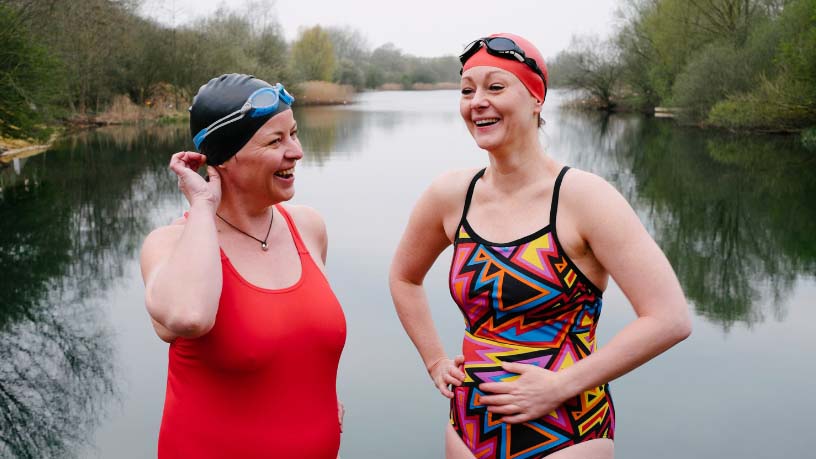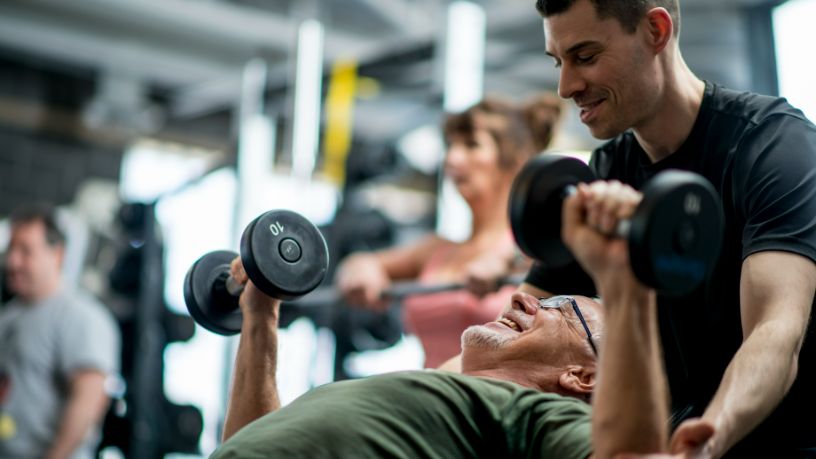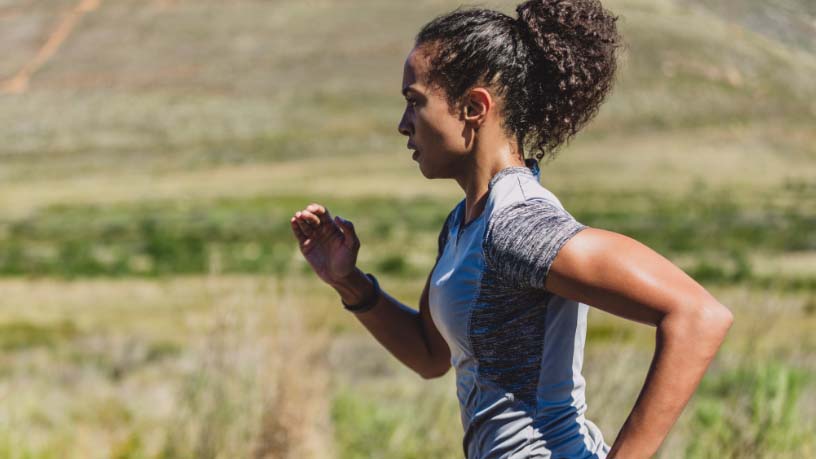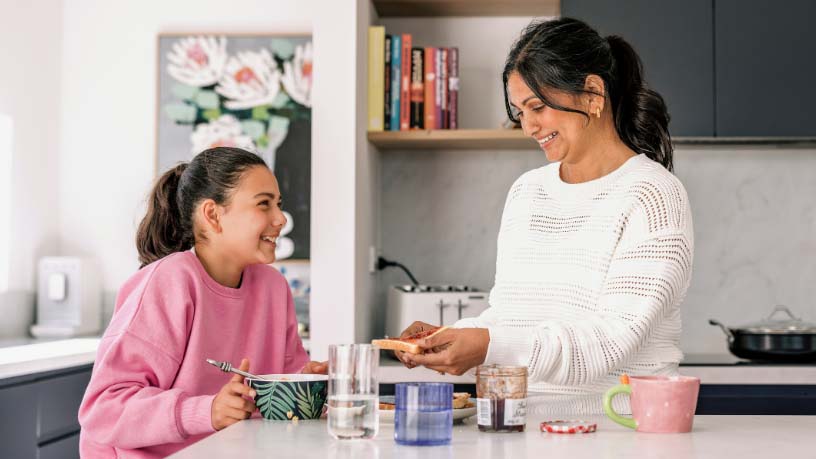Start out slow with moderate cardio once or twice a week to help reduce your risk of injury and burnout.
On this page
Key takeaways
Find a style of exercise you really enjoy and use the time to listen to a podcast or chat with friends to keep yourself engaged.
Incorporate different types of exercise and activity for overall health and fitness.
Regular exercise is one of the most important things you can do for your health, but most of us aren’t doing enough. Statistics show over half of all Australian adults1 don’t meet the guidelines for recommended amounts of physical activity.
The benefits of regular exercise include weight loss, but maintaining a good level of fitness can also help you:
- lower your blood pressure
- reduce stress
- sleep better
- improve your mental health.2
Regular exercise can also lower your risk of some serious conditions, including heart disease, type 2 diabetes, some cancers, and more.3
“Starting a new exercise routine can be challenging,” says Rich Green, Exercise Physiologist and Bupa Healthcare Programs Manager. “Especially if you're not used to it.”
What does being active really mean?
Staying healthy doesn’t mean running marathons or spending every spare minute at the gym.
The recommended guidelines4 for physical activity and exercise suggest that people aged between 18 and 64 do:
- 2.5 to 5 hours of moderate physical activity a week. These are exercises that slightly increase your heart rate (like brisk walking or swimming)
or
- 1.25 to 2.5 hours of vigorous physical activity a week. These are activities that will have you huffing and puffing (like aerobics, jogging or group sports)
or
- a combination of the above.
If you’re 65 years or older, you should do at least 30 minutes of moderate intensity physical activity on most, preferably all, days.
How to start exercising and stick with it
Kick-starting an exercise journey can be tough to start and even tougher to stick to. Here are 5 tips to help you achieve success.
1. Start slow
While you might be excited to run head-first into your new fitness regime, Green recommends easing into it to avoid injury and burnout. Start with moderate cardiovascular activities once or twice a week.
“You will notice after the first time you exercise that you may be a little stiff and sore,” Green says. “This is your body telling you that you worked hard.”
According to Green, the soreness will ease over time, and you will be able to gradually increase the duration and intensity of your workout as your body adapts to your new lifestyle.
He adds: “Consistency is key to building a strong foundation.”
2. Do something you enjoy
You may have tried on different fitness hats in the past, but they just haven’t stuck.
Green recommends doing activities that you actually enjoy.
“Engage in exercises that you find fun and interesting,” Green says. “This could be anything from walking, swimming, dancing or gardening.”
It makes sense that if you’re enjoying your workout, you’re more likely to keep doing it, and there are lots of ways to make even a simple walk on the beach more engaging.
“It may be a time when you catch up on the latest podcast or listen to an audio book,” says Green.
It can also help to exercise with friends or in a fitness group, which “can provide accountability and make the experience more enjoyable,” Green adds. “Sharing your progress and challenges with someone can help you stay motivated and committed.”
3. Set (realistic) goals
To prevent burning out or getting bored of your new fitness regime, set some realistic goals.
For example, you might start your fitness journey by walking 30 minutes three times a week. Or you might do a predetermined number of push-ups every month.
Achieving these smaller milestones will boost your long-term confidence and motivation.
4. Listen to your body
When you start a new fitness routine or exercise, you need to be aware of potential injuries.
“Pay attention to your body's signals and avoid pushing yourself too hard,” Green says. “Especially in the beginning.”
Green adds that it’s okay to experience a little discomfort when you regularly work out. But you need to keep an eye out for problematic symptoms, such as sharp pain and extreme fatigue, which may be a sign that you need to slow down or change things up.
You should immediately stop exercising and seek medical attention if you experience5:
- sharp pain or discomfort
- chest pain (which might indicate angina or even a heart attack)
- extreme breathlessness
- very rapid or irregular heartbeats.
Likewise, “rest when needed and give your body time to recover,” Green says. “And always drink water during and after exercise.”
5. Incorporate strength training and flexibility work
Being active isn’t just about making our bodies go faster, but about making them stronger too.
Including some strength and flexibility training will help increase lean muscle and bone density and improve balance.
“Strength training helps build lean muscle mass, boosts the metabolism and improves bone health,” Green explains. “Flexibility exercises enhance mobility and reduce the risk of injury.”
Different types of strength and flexibility training include6:
- resistance training
- weightlifting
- yoga
- Pilates
- exercises that use your bodyweight, such as push-ups and squats.
Whether you’re starting a new fitness regime tomorrow, or you’re weeks or months into one, Green adds this final piece of advice:
“Remember, consistency and patience are key factors in achieving long-term success. Don't be discouraged by setbacks and always celebrate your achievements along the way.”

At Bupa, trust is everything
Our health and wellbeing information is regularly reviewed and maintained by a team of healthcare experts, to ensure its relevancy and accuracy. Everyone's health journey is unique and health outcomes vary from person to person.
This content is not a replacement for personalised and specific medical, healthcare, or other professional advice. If you have concerns about your health, see your doctor or other health professional.
1Australian Government, Department of Health and Aged Care. (2021). About physical activity and exercise. Australian Government, Department of Health and Aged Care.
2Better Health Channel. (2021). Exercise and mental health. Victoria State Government, Department of Health.
3Healthdirect. (2021). Physical activity guidelines for older people. Healthdirect.
4Australian Government, Department of Health and Aged Care. (2021). For adults (18 to 64 years). Australian Government, Department of Health and Aged Care.
5Better Health Channel. (2015). Exercise safety. Victoria State Government, Department of Health.
6Jennings-Edquist, G., & Wong, J. (2020). What's the minimum amount of exercise you need to stay healthy?. ABC Everyday.
You might also like...
5 tips to start exercising (and stick with it)
Exercising regularly is one of the best things you can do for your health, but it’s not always easy to get started. Try these 5 tips to help get moving.
Strength training: What you need to know
Starting a fitness journey can be overwhelming, especially when you’re trying something new. Discover the basics and benefits of resistance training.
A beginner’s guide to running and loving it
Taking up running can seem daunting, so here are 5 top tips to help you boost your confidence, change your mindset, and get real about running.
5 easy ways to cut down on sugar
We've all heard about the health risks of eating too much sugar, but is cutting it out completely the answer?




